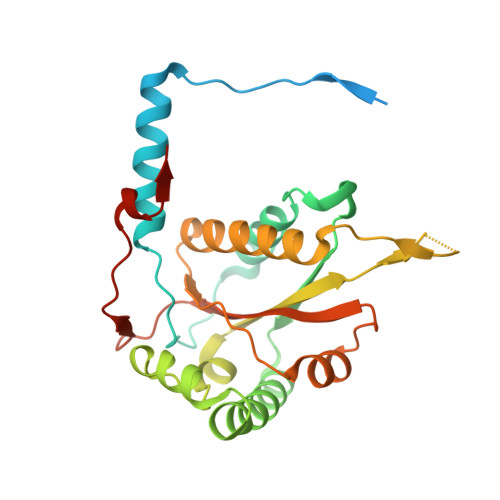Redox control of iodotyrosine deiodinase
Hu, J., Su, Q., Schlessman, J.L., Rokita, S.E.(2019) Protein Sci 28: 68-78
- PubMed: 30052294
- DOI: https://doi.org/10.1002/pro.3479
- Primary Citation of Related Structures:
5YAK - PubMed Abstract:
The redox chemistry of flavoproteins is often gated by substrate and iodotyrosine deiodinase (IYD) has the additional ability to switch between reaction modes based on the substrate. Association of fluorotyrosine (F-Tyr), an inert substrate analog, stabilizes single electron transfer reactions of IYD that are not observed in the absence of this ligand. The co-crystal of F-Tyr and a T239A variant of human IYD have now been characterized to provide a structural basis for control of its flavin reactivity. Coordination of F-Tyr in the active site of this IYD closely mimics that of iodotyrosine and only minor perturbations are observed after replacement of an active site Thr with Ala. However, loss of the side chain hydroxyl group removes a key hydrogen bond from flavin and suppresses the formation of its semiquinone intermediate. Even substitution of Thr with Ser decreases the midpoint potential of human IYD between its oxidized and semiquinone forms of flavin by almost 80 mV. This decrease does not adversely affect the kinetics of reductive dehalogenation although an analogous Ala variant exhibits a 6.7-fold decrease in its k cat /K m . Active site ligands lacking the zwitterion of halotyrosine are not able to induce closure of the active site lid that is necessary for promoting single electron transfer and dehalogenation. Under these conditions, a basal two-electron process dominates catalysis as indicated by preferential reduction of nitrophenol rather than deiodination of iodophenol.
- Department of Chemistry, Johns Hopkins University, Baltimore, Maryland, 21218.
Organizational Affiliation:


















